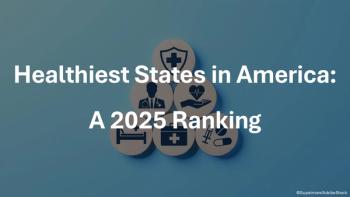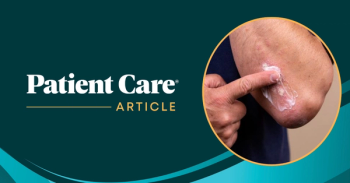
How to Optimize Telemedicine for Older Adults, During COVID-19 and Beyond
Telemedicine use has increased significantly since COVID-19 began and while not new to all patients and providers, can pose unique challenges to care for older adults.
As the novel coronavirus disease 2019 (COVID-19) began to spread across the US in early 2020, health systems quickly made sweeping changes to how care was delivered. These changes sought to help slow COVID-19 transmission by keeping as many patients at home as possible.
One critical way physicians ensured patients stayed home was to shift from in-person visits to telemedicine. Telemedicine technology and its use are not new, but widespread adoption has been
According to the most recent data from the US
Also, between 2019 and 2020, the
Despite the increase in telemedicine adoption, the rapid switch toward its use was a big change to both physicians and patients.
“Like many of the physicians out there, I went from 0% telemedicine to 100% telemedicine in the second week of March, so it was actually a shock for me as well as for a majority of my patients,” said Esther Oh, MD, PhD, Associate Professor, Geriatric Medicine/Gerontology, Johns Hopkins School of Medicine, Associate Director, Johns Hopkins Memory and Alzheimer Treatment Center, in a recent interview with
Dr Oh, who works exclusively with elderly patients, was not alone in providers who had to suddenly offer telemedicine.
In June 2020, the
Results showed that from 2019 to 2020, there was a significant increase in the proportion of older adults who reported that their health care providers offered telehealth visits. In May 2019, 14% of older adults said that their health care providers offered telehealth visits vs 62% in June 2020.
Similarly, the percentage of older adults who had ever participated in a telehealth visit increased sharply from 4% in May 2019 to 30% in June 2020. Of those surveyed in 2020, 6% reported having a telehealth visit prior to March 2020, while 26% reported having a telehealth visit in the period from March to June 2020 (76% of those participants reported it was with a primary care provider).
Telemedicine Use Up, but Older Adults Present Unique Challenges
Older adults are a high-risk population for COVID-19, making the use of telemedicine among this patient population essential. While telemedicine adoption has increased, symptoms of aging among older adults may challenge the quality of a telemedicine interaction, and the overlay of COVID-19 restrictions may add more unexpected challenges for physicians.
Hopkins’ Oh and colleague Carrie Neiman, MD, MPH, addressed these challenges and the importance of helping older patients make the most of virtual visits in an editorial titled
One of the main challenges they highlighted was hearing loss, which is a common symptom of aging among older adults.
“Age-related hearing loss is really common. When we look at the population in the US overall and we look at individuals 70 years and older, two-thirds have clinically significant hearing loss, and the vast majority of that hearing loss is mild to moderate,” said Neiman, Assistant Professor, Otolaryngology - Head and Neck Surgery, Johns Hopkins School of Medicine, in the same interview with Patient Care Online.
Oh, who is also a memory clinic specialist, experienced first-hand how hearing loss among her older patients made it difficult for her to conduct an accurate cognitive assessment during a telehealth visit.
“What I found was that as I was administrating cognitive testing, clearly it really wasn’t a test of memory or any other domains of cognitive function,” said Oh who thinks that hearing loss instead was hindering the assessment. “They couldn’t even really repeat back what I had asked them to repeat, so it was not an accurate assessment.”
Older patients themselves are concerned about hearing loss interfering with a telehealth visit. In the same 2020 NPHA survey, 25% of adults aged 50-80 years said they were worried they would have difficulty hearing or seeing the health care provider during a virtual visit.
Because most older adults do experience mild-to-moderate hearing loss, physicians and patients may both miss the deficit as a driver of the communication problem.
“On behalf of physicians, we don’t always identify it in our patients. Our patients oftentimes don’t identify it either…but more and more we’re thinking that it [hearing loss] is something that is important to identify, important to address,” said Neiman.
As telemedicine continues, symptoms of aging like hearing loss will be important for physicians to pay attention to with their older patients.
Telemedicine Essential, but Mental Health Suffers
Neiman and Oh have logged many telehealth hours with their older patients since March, and while doing all they can to ensure a meaningful interaction, have noted that the social distancing that has made telemedicine essential is also affecting patient’s emotional health.
“What I find is that often it’s a patient and perhaps their spouse or caregiver, who are now very isolated because their family members are not allowed to visit them anymore or actually prefer not to, with the fear of obviously spreading COVID-19 so there’s a social isolation impact,” said Oh.
Current
According to a
Older patients who are in assisted living facilities, in particular, may experience worse mental health outcomes as restrictions continue.
“They [older patients] enter these facilities thinking they’re going to have ready-made friends, a lot of activities provided, meals together in a dining room,” continued Oh. “Now, all the activities are cancelled, meals are being delivered to their rooms. So, in a way, they’ve become even more isolated than perhaps if they had stayed in their own neighborhood.”
In light of this, the Centers for Medicare & Medicaid Services (CMS) recognized the significant toll quarantine orders were having on nursing home resident and issued updated guidance in
Some of the challenges for clinicians in remote delivery of medicine will change with time but some may stay the same—including trying to establish the clinician-patient rapport that is a traditional element of care despite the physical separation and learning to detect less overt changes in patients’ health on a screen and through speakers, receivers, or headphones.
Nieman and Oh have been working on the mechanics of the second challenge and have a few practical suggestions they think can help.
The first is, where it’s possible, push for video visits vs audio or telephone only as older adults are connecting more with their loved ones via video conferencing platforms such as FaceTime and Zoom.
“While there may be hesitations and technological considerations…trying to push for a video visit is very helpful because you get a lot of information…in terms of being able to see somebody's lips, see their facial expressions, their gestures,” explained Neiman. “Even if the older adult themselves doesn't want to have the video on for their end, at least having it on for you as the physician or the provider can be a big help.”
Also, getting a good set of headphones is an easy way to ensure telehealth visits with older patients go smoothly, according to Neiman.
“A headset can go a long way in terms of really optimizing the signal-to-noise ratio in terms of picking up what should be amplified and minimizing background noise,” said Neiman.
Physicians can also ask family members for input and help as well because there is usually frustration involved when dealing with technology, added Oh.
“Just from the get-go, I usually ask them [older patients], ‘would it be okay if I contact your children?’ even if they're on a different coast or out of state, usually they can walk them through this,” said Oh. “Speaking to that, as you have a better connection, a better platform…it gives you a chance to do a virtual house call, so to speak. You get to see the patients in their own home environment, and that in itself is very informative.”
Telemedicine is here to stay
Telemedicine has rapidly become a viable and valuable way to deliver health care and while it has come of age during a crisis, it won’t disappear as the pandemic recedes.
Surveys find patients of all ages
For example, in a survey of 2000 US adults aged ≥18 years conducted by
When asked if her older patients had been receptive to the use of telemedicine, Oh said her patients warmed up to the idea after working out the technology kinks such as setting up a Zoom account or teaching them how to unmute themselves.
“Now that we’ve been doing this [telemedicine] for several months and I would call them ahead and say ‘If you want your family member to join you on the clinic visit, like your children, then we might have to use Zoom’ and they’ll say ‘No worries, I’ve already done it several times.’”
And this is a testament, added Oh, to how resilient older adults can be – a fact that physicians can sometimes forget.
“One thing we [physicians] forget is how resilient our older adults are. We make too many assumptions about what they can and cannot do and I’ve been really surprised,” said Oh. “Even in the past several months, there has been a dramatic change in their attitude and their aptitude as well.”
As COVID-19 cases continue to rise, the use of telemedicine is only going to continue with it and despite the challenges surrounding telemedicine use in older adults, physicians and older adults have the same goal: Proper communication.
“The goal from the start is to be able to connect with your patient and for the older adults as well,” said Neiman. “So, let’s make sure that we tackle the communication side as best as possible on both ends, because it’s the same shared goal…It may be frustrating and difficult, but recognize it and try to do something about it.”
Newsletter
Enhance your clinical practice with the Patient Care newsletter, offering the latest evidence-based guidelines, diagnostic insights, and treatment strategies for primary care physicians.























































































































































































































































































































